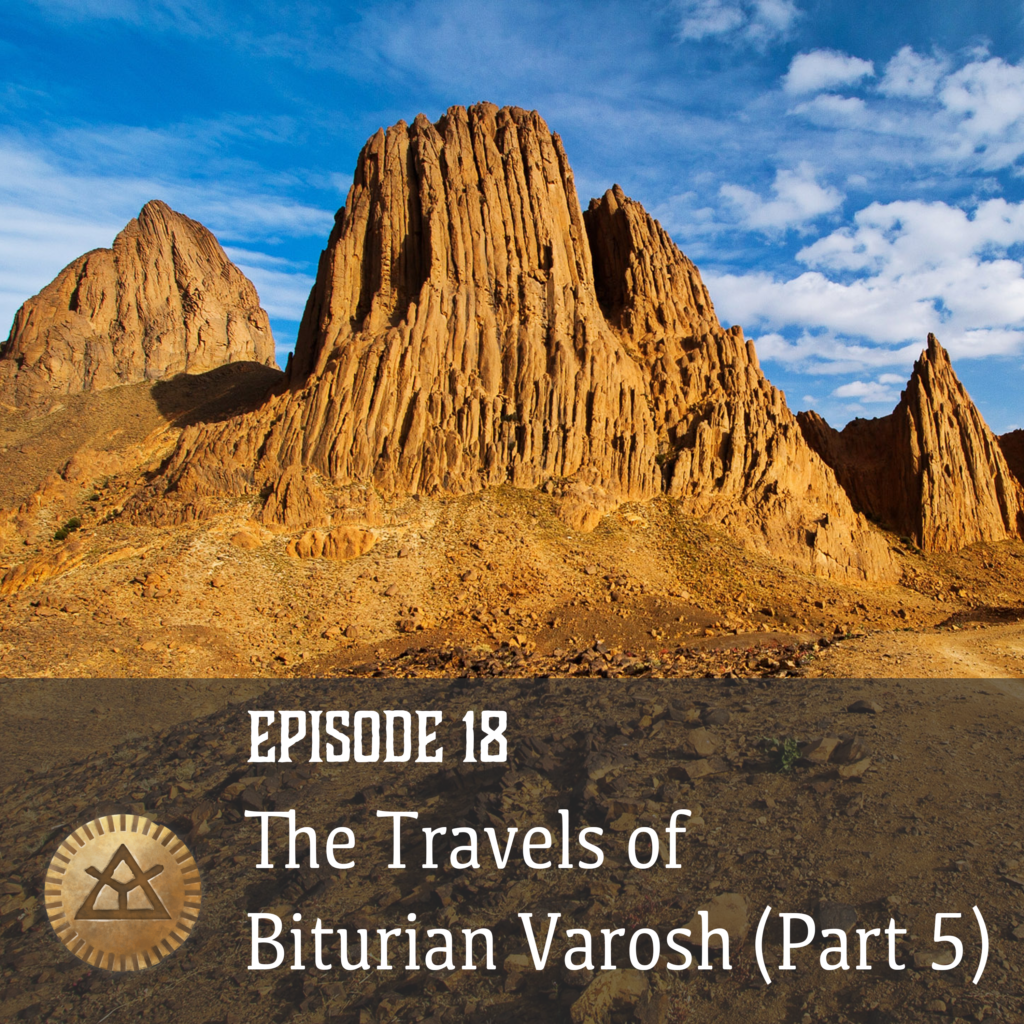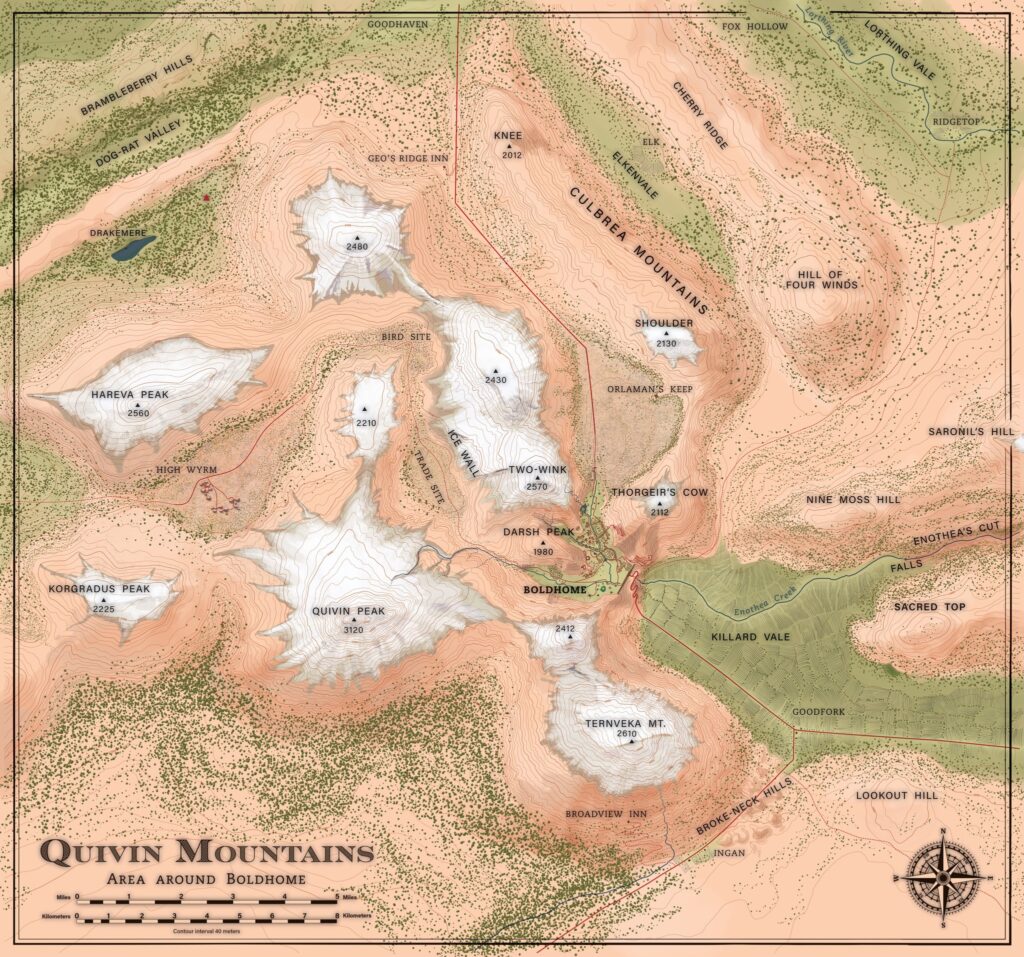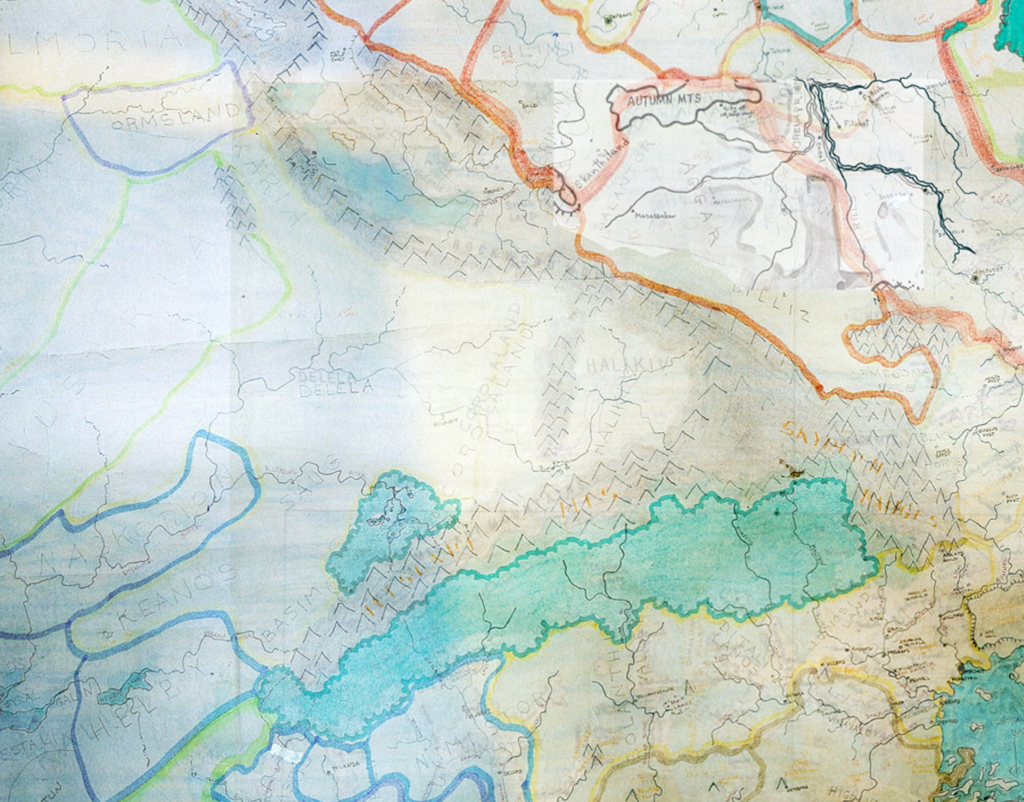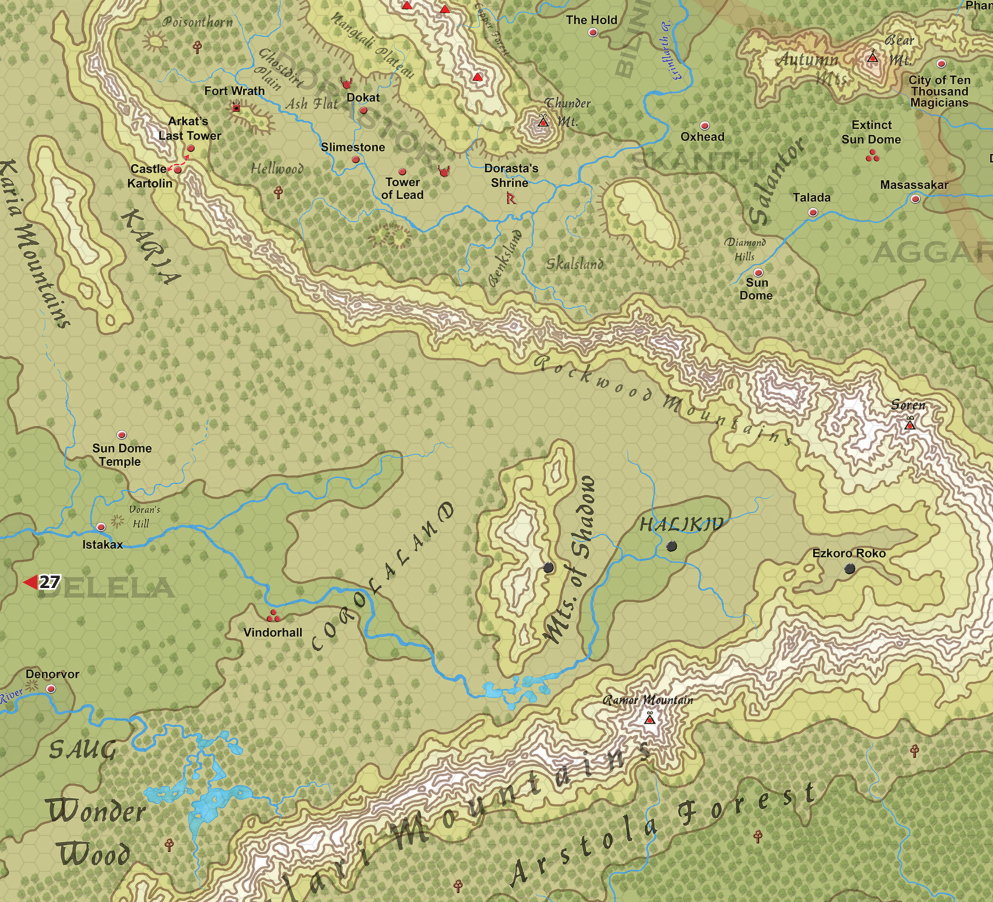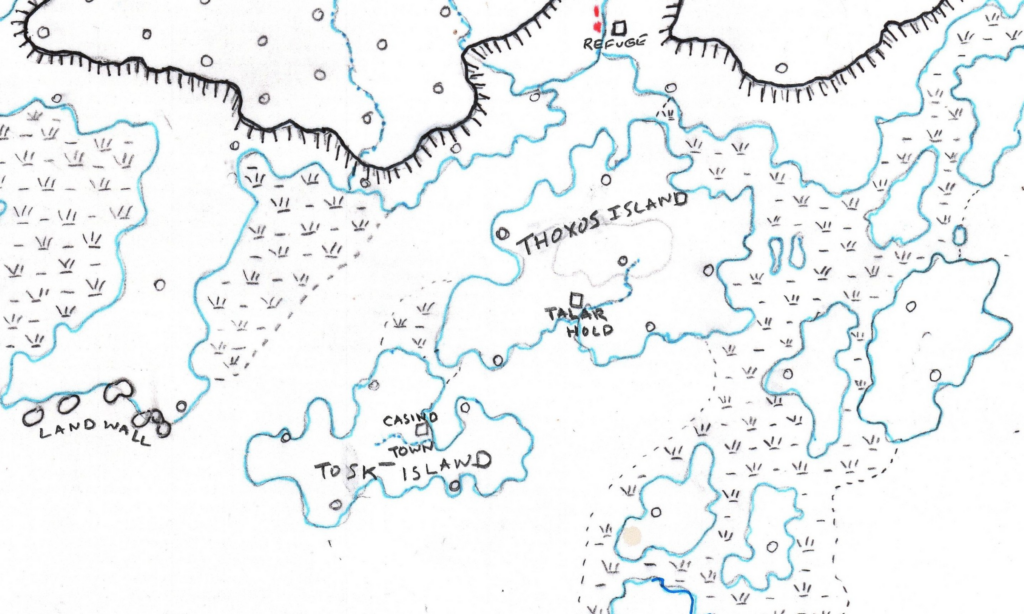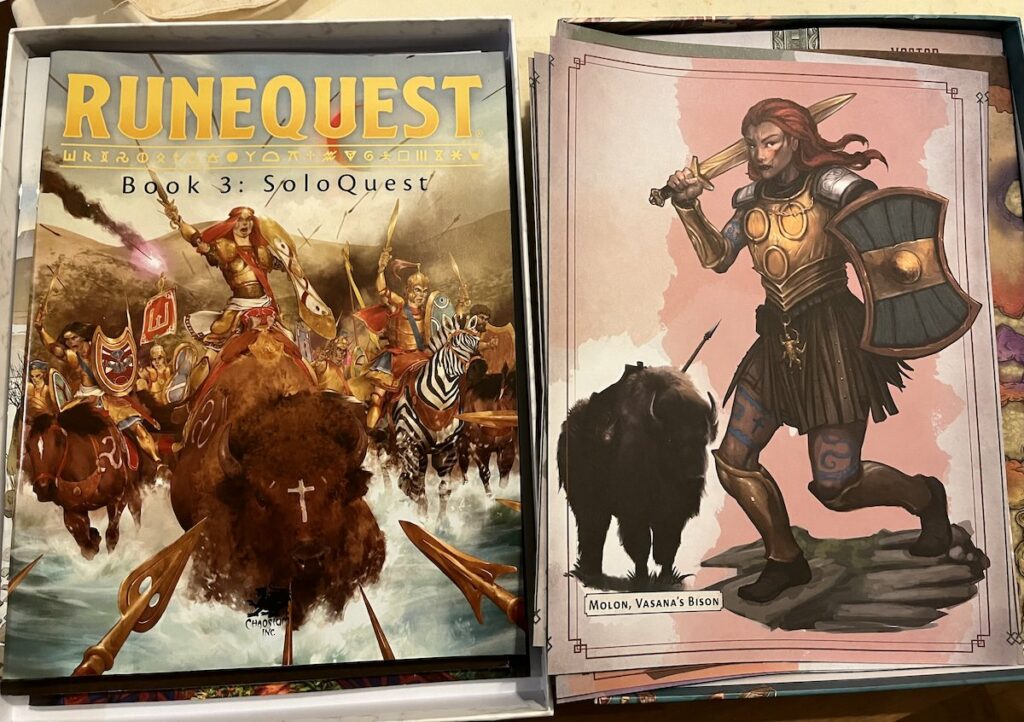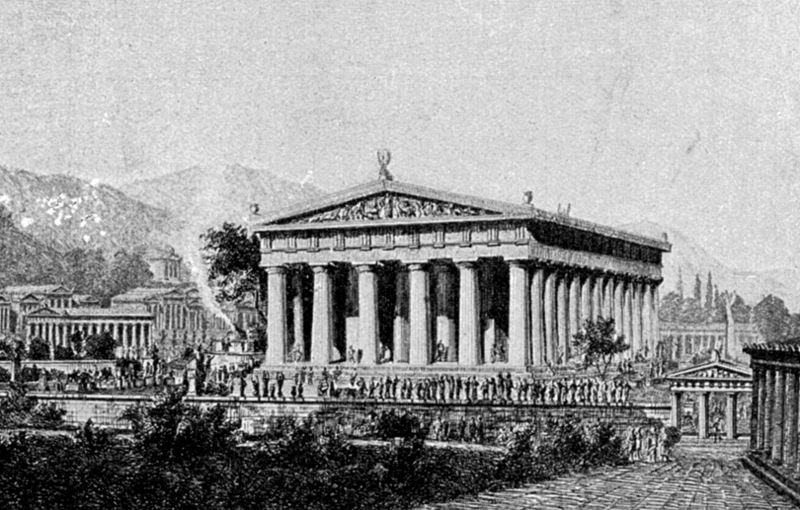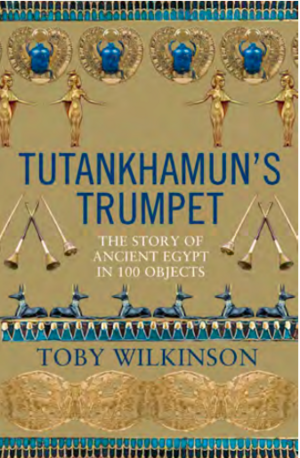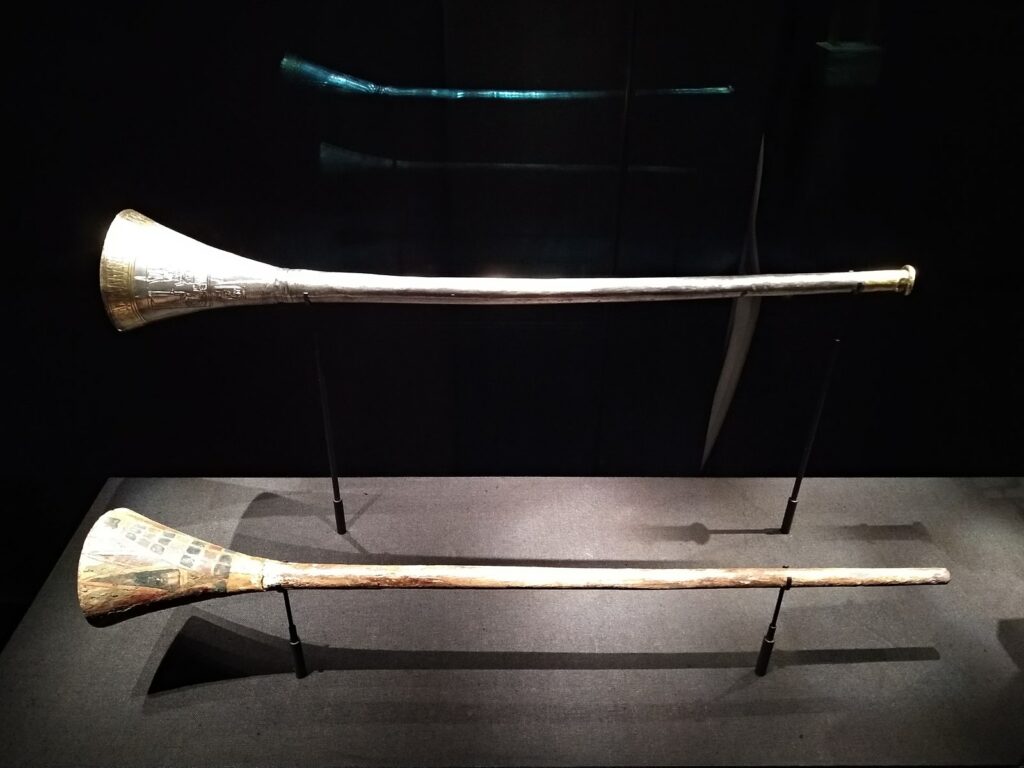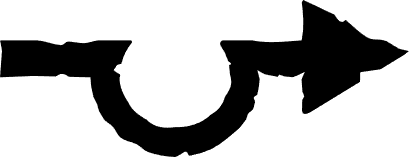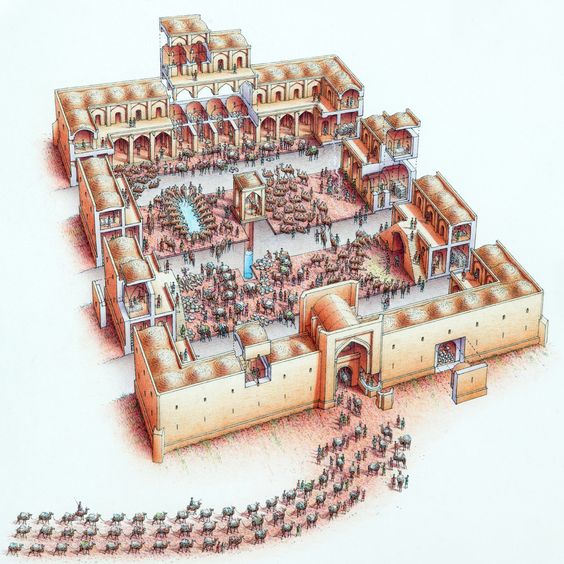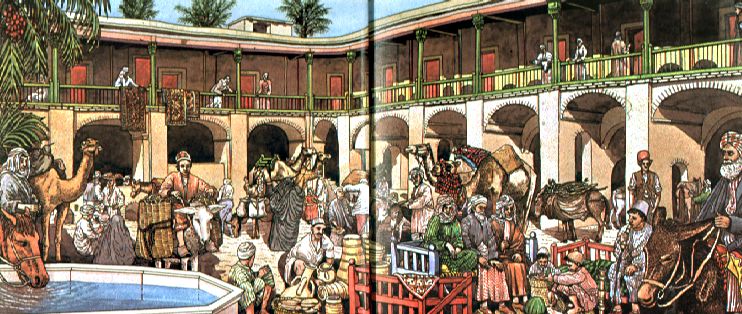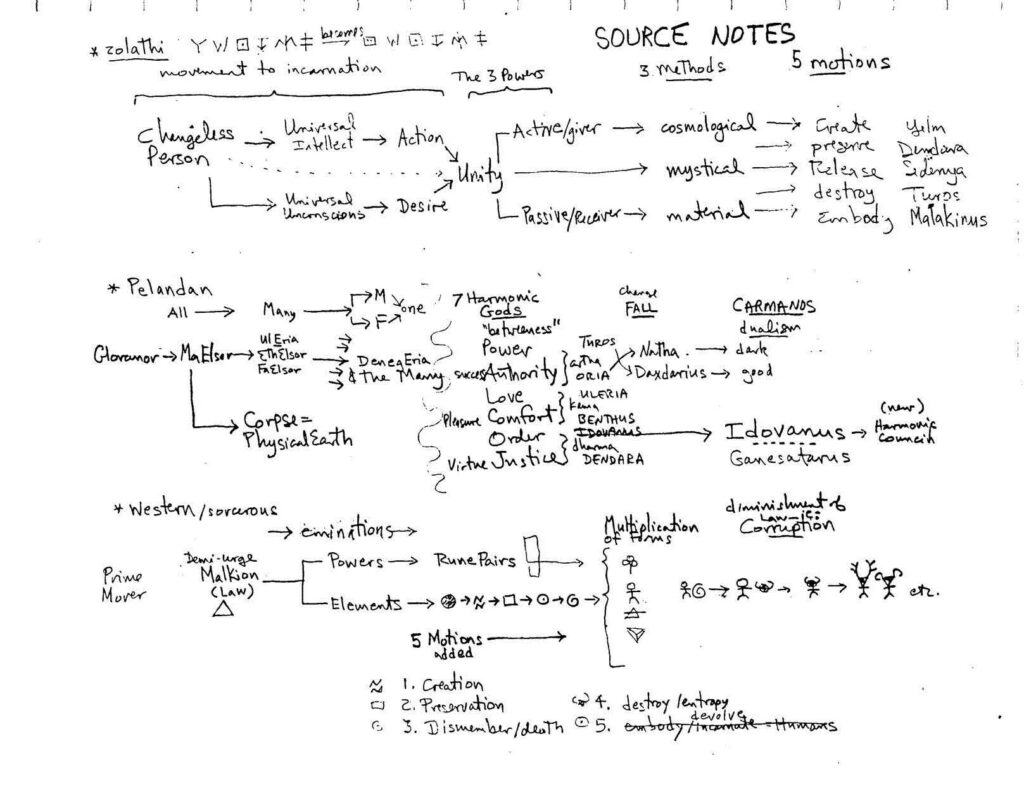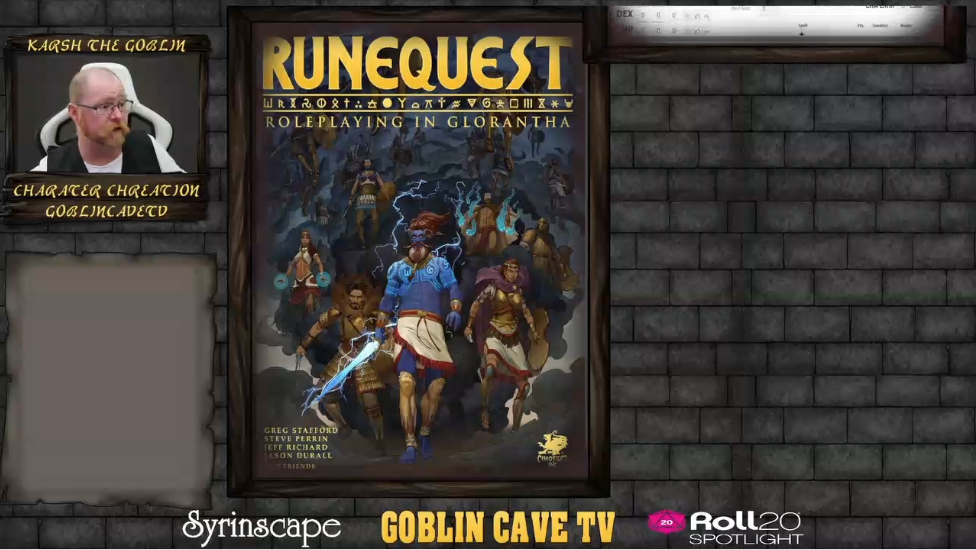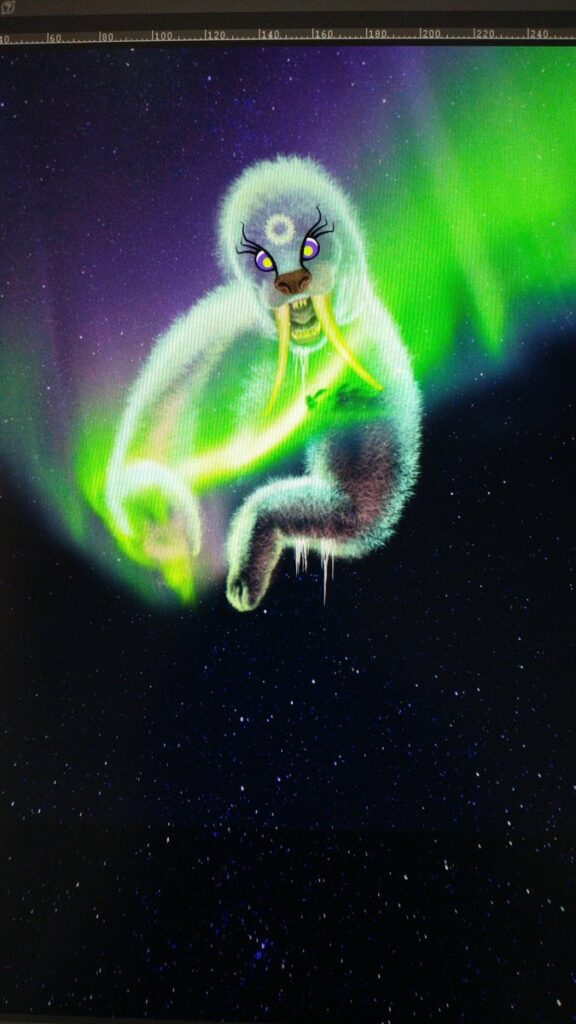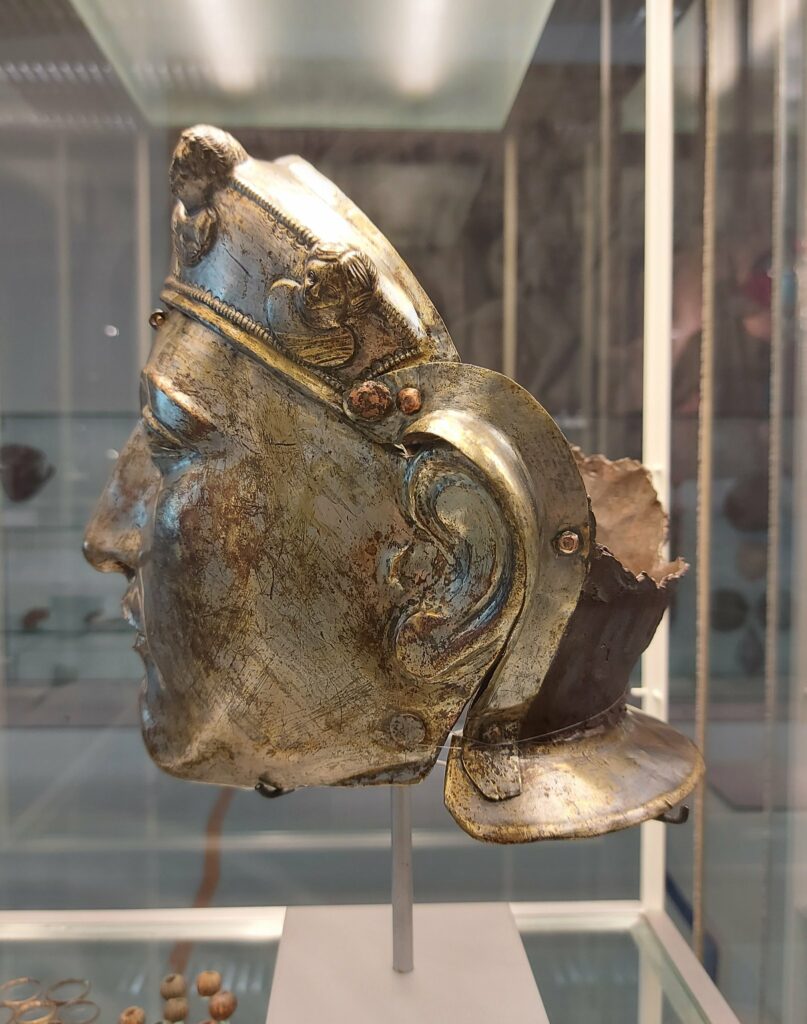Welcome to a new issue of the Journal of Runic Studies, the premier Malkioni publication for studies into the nature of Glorantha. If you haven’t subscribed yet, please consult with the spirit bound to the appropriate electronic page.
Chaosium News

Here are this week’s Chaosium news!
Sneak Peek at Black Shamrock’s Gloranthan Game
RTE, Ireland’s “National Television and Radio Broadcaster”, did an article on a new tax credit for Irish video game companies… and the article’s video featured Black Shamrock‘s studio! This is the studio that is currently working on the so-called “RuneQuest video game”, about which we pretty much knew nothing until now (well, as far as I know)… go check out the video now!



The screenshots above are blurry because capturing stills from a web video is fraught with danger so, again, check out the video for yourself. If you’re using some adblocker or other security/privacy add-ons in your browser, you might not be able to see the video in the RTE article. In this case, you can see it directly here, or in the embedded video of RTE’s corresponding tweet.
Anyway, as you can see, it looks like Black Shamrock’s game is some sort of action/RPG game with a 3D isometric-ish view. In the bits shown in the video you control what looks like a Bison Rider in Prax. Magic spells and arrows are visibly flung around, as the Irish Minister for Finance Paschal Donohoe is trying to annihilate a Tusk Rider camp.
Since the video is shot inside Black Shamrock’s office, you can spot a few things, like concept art and design work in progress.

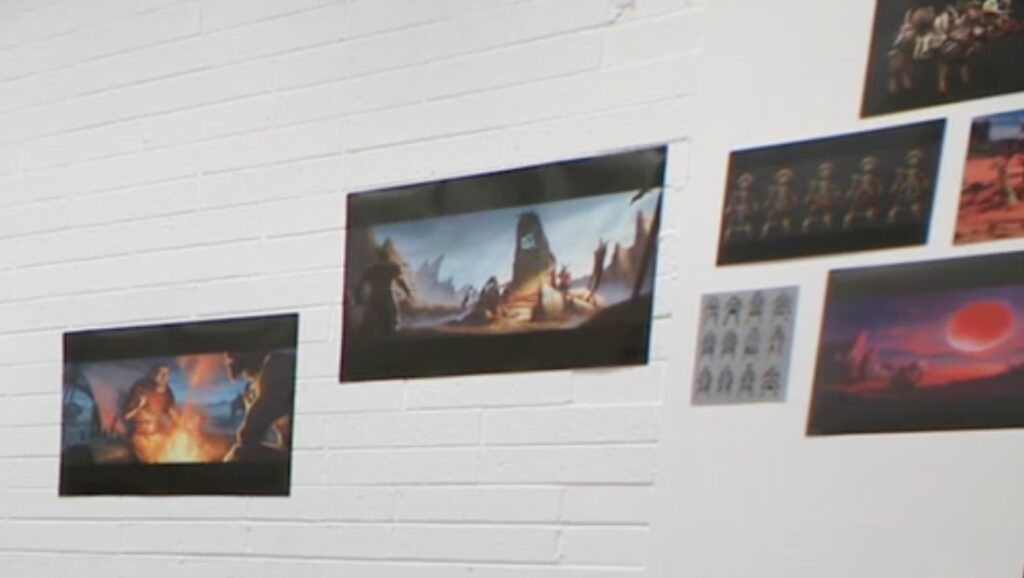
We might encounter some sort of eel naiad thingie at some point, and there’s definitely a Red Moon over there.
Chaosium cheekily tweeted:
Wow! Check out this video game where you get to play as a lance-wielding bison rider in the desert fighting monsters! If only there was a TTRPG to go along with it…
There’s also a quick blog post doing a flashback to Jeff and MOB’s trip to Dublin in 2018.
Canadian Shipping Unavailable For Now
Bad news for Canadians… which sadly includes me! Chaosium’s warehouse contractor in Canada has apparently stopped working. I had a standing order that stayed as “pending shipping” for a couple weeks, which was very odd. Apparently Chaosium didn’t know what the problem was, as the Canadian fulfillment centre apparently silently went under.
Chaosium has regretfully suspended its Canadian fulfilment centre operations. This is due to poor service and lack of communication from our local partner in Canada.
Since shipping orders from the USA would result in Canadian customers being charged customs duties by the Canadian government, we have fully refunded all customers whose orders were in the backlog of unshipped physical items. We are doing this now in the hope that our Canadian customers will still have time to re-order any Holiday gifts they may have been waiting upon.
We are looking at new options for Canadian fulfilment, including other local warehouse partners.
This sucks for both us Canadians and for Chaosium. I hope that they can recover the stock they had in Canada, and that they will quickly find a new fulfilment partner.
Jonstown Compendium

The Jonstown Compendium is Chaosium’s community content program for all Gloranthan games, hosted on DriveThruRPG. Disclaimer: all the relevant links are affiliate links that hopefully will let us cover some of the hosting and maintenance costs for the website and podcast! Thanks for using them!
A Message from Nick Brooke
Nick Brooke, Chaosium’s Community Content ambassador and all around Gloranthan super-fan, is getting the Jonstown Compendium 2022 Catalogue ready for release. Now is the time for you to leave a review and/or comment on some community content! This goes a long way with helping out creators, and it makes them feel good too… Nick says:
If you want your opinions to count, please remember to rate and review your favourite Jonstown Compendium purchases on the DriveThruRPG site before year-end! My Catalogues list titles by best-seller medal rank and then by the number of five-star reviews each release has racked up, and you’ve been pretty slack this year… let’s give those authors a nice warm cosy feeling to carry them through the bleak Midwinter, eh?
If you want to be nice to me and the God Learners, how about leaving a nice review on my two RuneQuest adventures so far: “A Short Detour” and “Bog Struggles“. Thanks!
The White Upon The Hills

Do you have some hunters in your party? Sacha Gauthier and Reece Dyer have a treat for them! A whole adventure set during the Great Hunt, which is the pan-cult hunting contest that happens at the end of the year between Odayla, Yinkin, Foundchild, and other such cults.
For many seasons, the White Blight has plagued the hunting grounds on Stael’s Hills. During the Great Hunt, the adventurers encounter the aftermath of a monstrous attack and the origin of the spreading curse. Tracking the monster, they find a magic strike-stone from an ancient hunting legend. If they intend to use it, they must retread the steps of a mysterious hunting god — to bind, slay and cleanse their prey.
The adventure should take about 2 sessions to complete, and is “written for low-to-moderately experienced adventurers“.
A Lamp for Esrola

It’s Dark season right now and it’s a great time to visit the Shadow Plateau!
Retrieve the Tears of the Only Old One which hold the secrets of Light and Darkness for the new Temple of Esrola. During the Siege of Nochet many beautiful buildings were damaged or destroyed. At a celebration to honor the rebuilding of the Temple of Esrola and her Grandson, Fufluns, an opportunity to bring the source of eternal light to the temple is presented to the Adventurers. Are they up to journeying to the Troll-lands around the Shadow Plateau and negotiating or stealing Tear-stones? As the bard Joan of Clan Blackwoodstone sings:
Sven Lugar’s adventure is also, incidentally, worth for about 2 sessions and “written for low-to-moderately experienced adventurers“. It also includes some new minor cults, magical items, and more!
Died in the Wool

This adventure from Braeden Harpool looks super fun! Missing sheep! Uz! Trollball!
Dorastor Campaign Maps

Are you lost in Dorastor? Fear not! Dario Corallo has a beautiful high-resolution map for you! Well… you can still be in fear. You’re in Dorastor after all. But hey, at least you’ll die with wonderful cartographic possessions!
Jeff’s Notes

Jeff Richard, the current mastermind on everything Gloranthan at Chaosium, is often posting notes and thoughts on the RuneQuest Facebook group. Here’s our curated list from the past week. A partial archive of these sources is compiled on the Well of Daliath.
Greater, Major, and Minor Gods
Jeff is double-checking “some of the material about to go to the printer soon” (I assume this is the Prosopaedia):
I was comparing things to a list Greg had written some years ago, listing all the gods of Glorantha he knew. They were then classified as Greater, Major, Minor, and Demigod.
The Greater and Major are what concerns us here. These are the universally acknowledged Gloranthan deities. Greater Gods are of great cosmological importance; major gods are perhaps less cosmically important but enjoy recognition throughout the world and are among those that shaped the cosmos.
This is about their cosmological importance, not their cultural importance or whatever. So there are gods in this list that literally have no worshippers or, at least, no organized worship. On the other hand, some gods might be very well-known and have a widespread cult, but have no great role in the grand cosmic scheme of Glorantha.
If your god isn’t on the list, then it is likely a minor god or even a demigod. That includes such favorites as Argan Argar, Issaries, Yelmalio, the Seven Mothers, Oslir, and Polaris. Such deities are normally only of regional importance.
I have my own theory that Issaries is a lot more cosmologically important than he lets on (i.e. he invented the trade method called “worship” without which Glorantha couldn’t function, and has been taking a cut on all Rune magic shared between gods and their cultists since before Time), but that’s just my own crackpot God Learner conspiracy…
Anyway, looking at the list, my first surprise is the presence of “Greater Gods” that I had never heard about until now… I looked them up quickly so you don’t have to:
- Bolongo: a Pamaltelan god that is, effectively, “empty”. He brings bad things but, ultimately, he’s just a “mask” with nothing behind.
- Gloomshark: a big-ass shark deity that was “blighted and blasted by Chaos” in the God War. When it eats something, it never comes back… which I suppose makes its digestive system very very efficient? He’s supposed to be the primary Chaos entity in the Water. Reminds me of Kajabor’s powers, too (when Kajabor destroys something, it doesn’t come back either). Kajabor isn’t a Greater God, but Wakboth and Primal Chaos are, so there’s a good Chaos representation in this category already.
- Jotimam: looks like he’s the “void at the centre of the world”, and was released from inside the Spike when it shattered in the Gods War. He is noted as having no cult but my Call of Cthulhu inspirations lead me to believe he might have a few isolated madmen and eccentrics worshipping it privately.
A couple others I don’t know much about:
- Dayzatar: one of the sky gods who retreated high up in the celestial world because he didn’t have any fucks left to give to anybody. As I understand it, he stays up there in meditation, and his worshippers emulate him, doing fuck all, all day long. I think this is one of the few cults that aren’t really meant to be for adventurers.
- Mastakos: basically Orlanth’s driver? He has a chariot and he goes fast. I suppose he has some movement-based magic.
The rest should be pretty well-known if you’ve got the RuneQuest rulebook and bestiary, which is what we always assume you have over here on the God Learners website.
So if we think about the roughly 21 greater gods listed, about a quarter of them are associated with Chaos, which gives you an idea how much Chaos is a part of the world thanks to the Compromise. Entropy (and its child Time) are a key part of our cosmos, whether we like it or not.
[…] [Wakboth] has no cult. There’s nothing to contact. If he could be contacted, it would lead to the end of the world. In short, he doesn’t have a cult… yet.
That sounds… very ominous, in a Call of Cthulhu way…
A couple more relevant quotes and notes:
- “Arachne Solara is a rank above all of [the gods]“.
- Several gods are in the “Greater God” list because they are “owners” of a Rune (like Mastakos owning the Movement Rune). You can find the list of owners in the Glorantha Sourcebook or the Guide to Glorantha.
Anyway, I’ll let you look at the whole list and draw your own conclusions from Jeff’s additional comments.
Next is this other note about cosmically minor gods that are culturally important. This is where we find deities like Issaries and Oslira, who have a lot of worshippers and have very important roles in society, but don’t have any important role in the cosmos. Oslira is “just” a river after all. Oh and Yelmalio is there too of course… if anybody wants to start a debate…
There’s yet another note for the gods of the East Isles specifically, since this is where there’s basically one god for each island. But they’re all minor or very minor in the grand scheme of Glorantha’s cosmology.
More on Yelmalion Character Concepts
Speaking of Yelmalio, last week I shared a comment from Jeff on Yelmalio character concepts, and mused a bit about treating Sun Dome temples as “community centres for frontier people”. It looks like Jeff expanded a bit more on Yelmalion PCs on Facebook… and as usual had to defend the Yelmalio cult write-up against people who don’t find it compelling enough.
Yelmalio’s gifts are really where you get cool opportunities. […] Now if you don’t think any of those could be incredibly useful for a player character, then I don’t know what to do with you.
And if I am fighting in darkness, the ability to see in near darkness or to make things as bright as the noon day is not to be sneered at.
It’s funny because, as a gamemaster, I often forget to give a penalty to my players for fighting in darkness. I don’t know why — probably too much stuff to think about and do when a combat scene starts. Now that I have a Yelmalion in my party, I might remember it more often to make him shine (literally).
This other note on Yelmalio clarifies what he is about and what he’s not:
Yelmalio is the Solar deity found where Yelm’s imperial rule does not reach. Associated with the planet Lightfore, his cult brings Light to the darkest frontiers, and he is found among the Lightbringer barbarians and the elves. […]
One mistaken assumption is that Yelmalio is the god of pike warfare. He’s not, although the Spear and the Arrow are his weapons. His temples developed a means of fighting in an organised and disciplined manner for their own mundane survival, but that is a historical development, and not something from Yelmalio’s deeds.
I think this distinction is what trips many new and old hands to Glorantha and RuneQuest… but it’s arguably not very well described in the rulebook anyway.
More material for your world-building and adventuring:
Initiates work two weeks per season for the cult, normally doing local militia duties. This is comparable to the six weeks a year Orlanth initiates spend defending their temple – again basically militia work. The main difference is the Sun Dome Temples do militia work in Dark Season, and few Orlanthi communities do.
So remember, most Yelmalio cultists are farmers or herders. Most are militia, not mercenaries.
Again, the rulebook doesn’t explain this, and the text actually heavily suggests an all-mercenary cult. Hopefully the Cults books will explain this better?
Daliath’s Well
Chaosium’s Gloranthan resources website is called The Well of Daliath, but do you even know what that is?
At the bottom of the ocean is a Sacred Well that reaches down to the mysterious underworld waters of the Styx, the primal waters that arose from the Void. Those who drink from the Well are inspired with secret wisdom and sapience that comes from beyond mere reason and knowledge.
Daliath is the Keeper of the Well, and guards its secrets carefully. Only those gods and heroes that earn the right to drink from the Well are permitted to sip from it.
In Call of Cthulhu, all you need to do is make an “Idea roll”, just sayin’…
Anyway, I guess that when Divination isn’t enough to answer an important question, your PCs can heroquest to the Well of Daliath to get their answers. Jeff says that earning the right drink from the well often means getting “purified in Nelat’s Baths“. Nelat is one of Triolina’s husbands. He’s often described as a bald, robed guy holding two shells in his hands… I assume however that this is the human depiction of this god. It would be very weird for water races to depict their god as a bald guy?
Either way you’re headed into Water pantheon myths… which might prove tricky given how few PCs I’ve seen have ever had a Water Rune!
The Zola Fel Valley
Speaking of water, here’s a short note on the Zola Fel valley in Prax. Not much to report except that there’s a nice map scan:
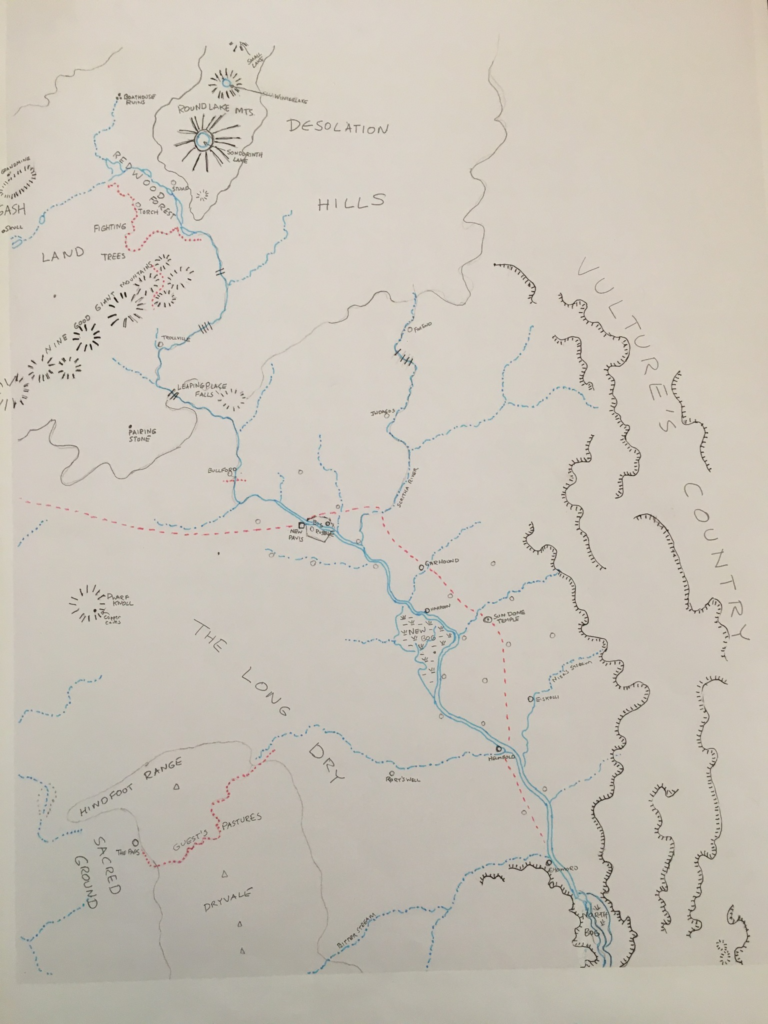
The Monomyth
Jeff, on Glorantha’s famous “monomyth”:
Glorantha is a unified setting – by that I mean that all of its pieces fit together to form a whole. The cosmology of Glorantha can be fit together to tell an overall story – popularly called the Monomyth. All that really means is that discrete myths have been assembled to tell a consistent narrative.
There’s a lot of variation of course, but the monomyth, as I understand it, establishes the basic narrative structures and actors involved in the setting. It was “researched” in-world by the God Learners, but it’s also used out-of-character to make sense of the setting and give some foundation for game designers and gamemasters to build upon. In many ways, the God Learners are the game designers’ proxy inside the world.
This monomyth is what sets Glorantha apart from many other settings, in my opinion. Not because these other settings lack a “monomyth”, but because Glorantha explicitly puts it in front of its players. This tells gamemasters and players to use it as the playground for their stories, which is what, I think, is sometimes interpreted as Gloranthan games having a more “mythological feel”.
The Size of a Tribe
Do you still need to tweak your world-building spreadsheets? Here are some of Jeff’s thoughts on tribal sizes in Sartar. I doubt there’s anything you don’t already know, though.
Solar Pentans
This next note however might be worthy of your spreadsheets! Here are some cult distribution numbers for Solar Pentans. As a reminder, the Pentans live in the large steppes north of the Wastes. These steppes span from the Lunar Empire to Kralorela in the East. I generally think of the Huns and other such nomadic people as inspiration for the Pentans (insert Gloranthan grognard telling me I’m all wrong here).
We have a Yelm and Dendara (Yu-Kargzant and La-Ungariant in Pentan) among the nobility and the Pure Horse tribes. Yelmalio and Eiritha (Karbzant and Cow Goddess) among the rank and file.
That makes sense, but the numbers seem a bit weird to me. Out of a total of 400k adults, we have 120k Yelm and Dendara cultists versus 180k Yelmalio and Eiritha cultists. This means that 30% of all adults belong to this “nobility”. I guess the Pentans have very good social mobility… or a very inefficient ruling class!
Now imagine how dangerous it could be if someone could unify all the Solar tribes – that’s a pool of over 150k+ cavalry! This is something that easily can overwhelm the Lunar Cavalry Corps, especially if it has even middling magical backing, and then simply go around the foot. Remember there are also three Storm Tribes, which provide even more force.
I didn’t know about the storm-worshipping Pentan tribes but they exist apparently: there are three of them, for a total of 200k Storm Tribe nomads.
They worship West King Wind, North War Wind, South Rage Wind, East Sting Wind! New gods that have been embraced by many Pentans since the genocide of the Nights of Horror. It’s all is there in the Guide!
Anyway back to the Pentans as a whole:
You can see that Dranz Goloi, whose Voor-ash Confederation include two or three Solar Tribes and two or three Storm Tribes is an existential threat to the Lunar Empire. He’s far far more dangerous than the loss of Dragon Pass, Prax, and the Holy Country. So much so, that even the Dragonrise seems small potatoes to the Red Emperor and his court in Glamour. Who cares what the Orlanthi are doing there, as the Red Emperor needs to be focused like a Sun Spear on the Voor-ash Confederation. If the Lunar Empire survives that, there is always time to reconquer Dragon Pass.
Dranz Goloi is one of the fascinating Gloranthan figures that I think gets a very short stick in the fan community. He built a coalition out of about half the Pentan tribes and very nearly took down the Lunar Empire. If I were a Lunar strategist, I’d be far more worried about him than some Orlanthi warlord in Dragon Pass.
One of my players has shown interest in visiting the Pentan nomads so I’ve filed this somewhere in my brain for future reference…
Lunar Retribution
This thread on the BRP Central forums asks the question that anybody playing in Sartar during the Lunar occupation eventually has to ponder: how long before the Lunars are onto the PCs? Jeff comments on this:
The Lunar Empire is not all powerful or all knowing. So let’s imagine things circa 1622-1625, back when there was a Lunar Occupation. We have a governor-general (really a satrap) in charge of things. That’s Tatius the Bright. If you want to travel another two weeks, you can appeal to the Provincial Overseer in Mirin’s Cross.
Tatius is kind of focused on the war in the Holy Country and the consecration of the Temple of the Reaching Moon, and most Lunar resources have been committed to these two projects, as these will cement his legacy and that of the Assiday family. If he hears that some Provincial officer got killed along with his militia-followers, he’s going to demand that his local allies deal with the situation rather than waste his time. Only if your actions threaten the war in the Holy Country or his temple-building project (or threaten key foundations of either – such as liberating one of the cities of Sartar) is he going to throw his own resources into the fray.
The aforementioned “local allies” are any Lunar-friendly tribe in this case. Lunar “collaborators” aren’t only the PCs’ enemies because of their opinions, but also because of their action: they’re going to hunt down and imprison/exile/extradite/kill any troublemaker that the Lunar Empire points at.
After the Battle of Auroch Hills, many tribes are effectively autonomous, as Tatius needs to focus everything he can on the war in the Holy Country. But these tribal “rebellions” are little more than large-scale banditry. The next year, Tatius sends the Lunar Army to besiege Nochet, and if that falls, who cares about pin-pricks from the Culbrea tribe?
1624 is a nightmare year. The Lunar Army is routed in Esrolia and has to retreat a couple of hundred kilometres through Esrolia and Beast Valley to get back to Sartar. I wouldn’t be surprised if detachments of the Lunar Army takes out their humiliations on any rebels it can, especially near the Royal Roads. But things are certainly getting tight from the Lunar perspective – and now Tatius is acting directly. King Broyan is killed near the Troll Woods in 1625, and a Praxian Army is defeated by the Lunar College of Magic (and its Chaotic allies) at Hender’s Ruins shortly thereafter. But by Earth Season, Tatius is finally ready to deploy his masterstroke – the consecration of the Temple of the Reaching Moon, which will extend the Glowline over Dragon Pass and the Holy Country (and much of Prax). The massive magical energies of this location will be harnessed and Dragon Pass quickly pacified.
Of course things don’t quite go as expected.
So unless the PCs are involved in spycraft with the Holy Country, or engaging in terrorism against the Lunar temple’s construction site, they will probably only get in trouble from whoever is the closest Lunar friendly tribe. But of course, I’m trying to get my players to get into one of the first options…
Since I quoted and wrote this, Jeff actually expanded on his thoughts on Facebook again. There’s a lot of extra information in the second part, including the fact that the vast majority of Lunar soldiers was in the Holy Country between 1622 and 1624, leaving only a couple thousand soldiers in Sartar and Prax respectively. Plus, Jeff tells us how dire the situation looks like from the perspective of Glamour in 1625, and what might look like the most important priorities. Interesting stuff.
The Moonburn
Talk about Lunar retribution: Jeff tells us more about the Moonburn, the time when the Lunar Empire went nuclear against the Aldryami forest of Rist, utterly destroying it with a rain of crimson fire.
I had to look it up to understand what was going on (Jeff’s use of “as we all know” here makes me chuckle, as it often does).
It’s the early 1290s and, as I understand it, the Lunar Provinces of “today” (Darjiin, Sylila, and so on) are still free. But this is the First Wane of the Lunar Empire and the Red Emperor needs to take the biggest kids in the schoolyard and beat them up real good to show everybody who’s the boss. Some of these small kingdoms had alliances with each other, and with the elves of Rist, a forest locatged between Darjiin and Sylila.

You can find it between the Yolp Mountains and the Palace of Flowers on the “modern” Argan Argar Atlas map above… well, it’s labelled “Rist” but there’s no forest. No shit. It was burnt down bad.
Most of the note is the same text you’ll find in the Glorantha Sourcebook, if you want to learn more about it, such as looking up this Char-un and Skyburn business. I’m out of time so no more notes from me here.
Rist had an area of approximately 6200 square km, so more than 6 times the area of the lands claimed by the Colymar Tribe. Although some of the groves survived because of elf defensive magic, this was still destruction on an incredible scale. Let’s put aside the tens of thousands of sentient beings that died horribly – this was also vast physical devastation of trees, animals, and you name it.
Runners up for the worst crime are: First Battle of Chaos and the Skyburn. Those early Lunars knew how to make an omelet!
Community Roundup
The community roundup is our highlight of interesting things being mentioned in the Glorantha-related Facebook groups, sub-Reddits, and other similar online places.
The Best Game Aid for RuneQuest
Austin Conrad wrote a blog article about Q-Workshop’s Runic dice, which he uses for inspiration when he has to improvise.
Q Workshop—known for its decorative dice for many different roleplaying games—produces a line of dice for RuneQuest which, no joke, changed how I gamemaster. The face of each die is marked with one of the game’s eponymous Runes. For example, the D6’s faces have small Water, Earth, Moon, Fire/Sky, Air, and Darkness Runes on each of the die’s faces, from one to six.


You can get Q-Workshop’s dice here and here. I myself have the beige set pictured above. You can see the Runic D20 on the second picture
Thank you for reading
That’s it for this week! Please contact us with any feedback, question, or news item we’ve missed!




